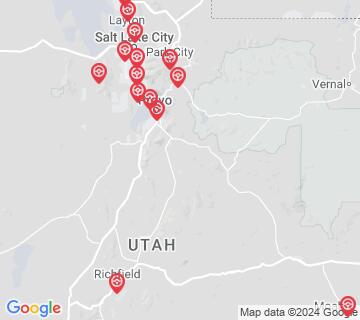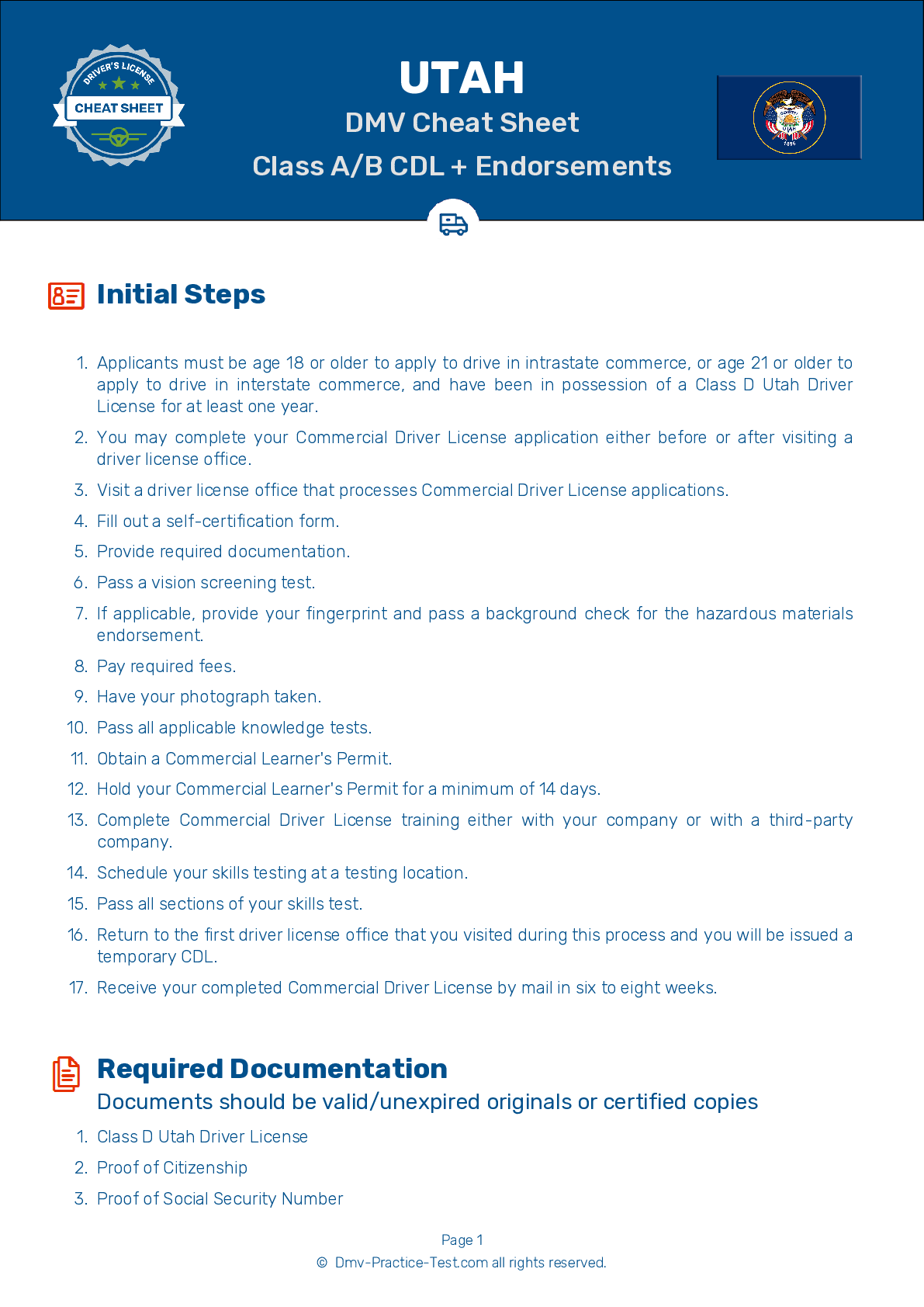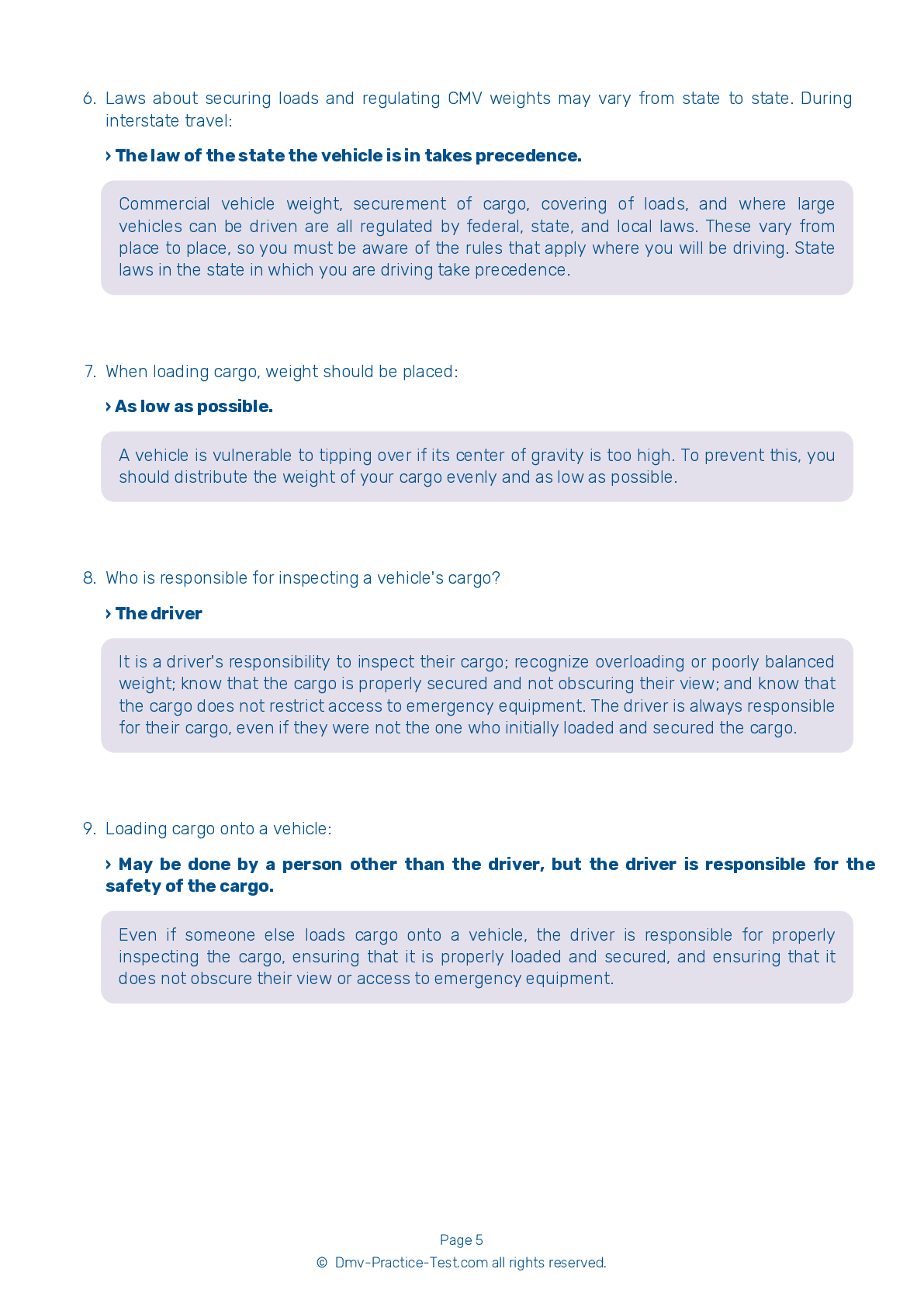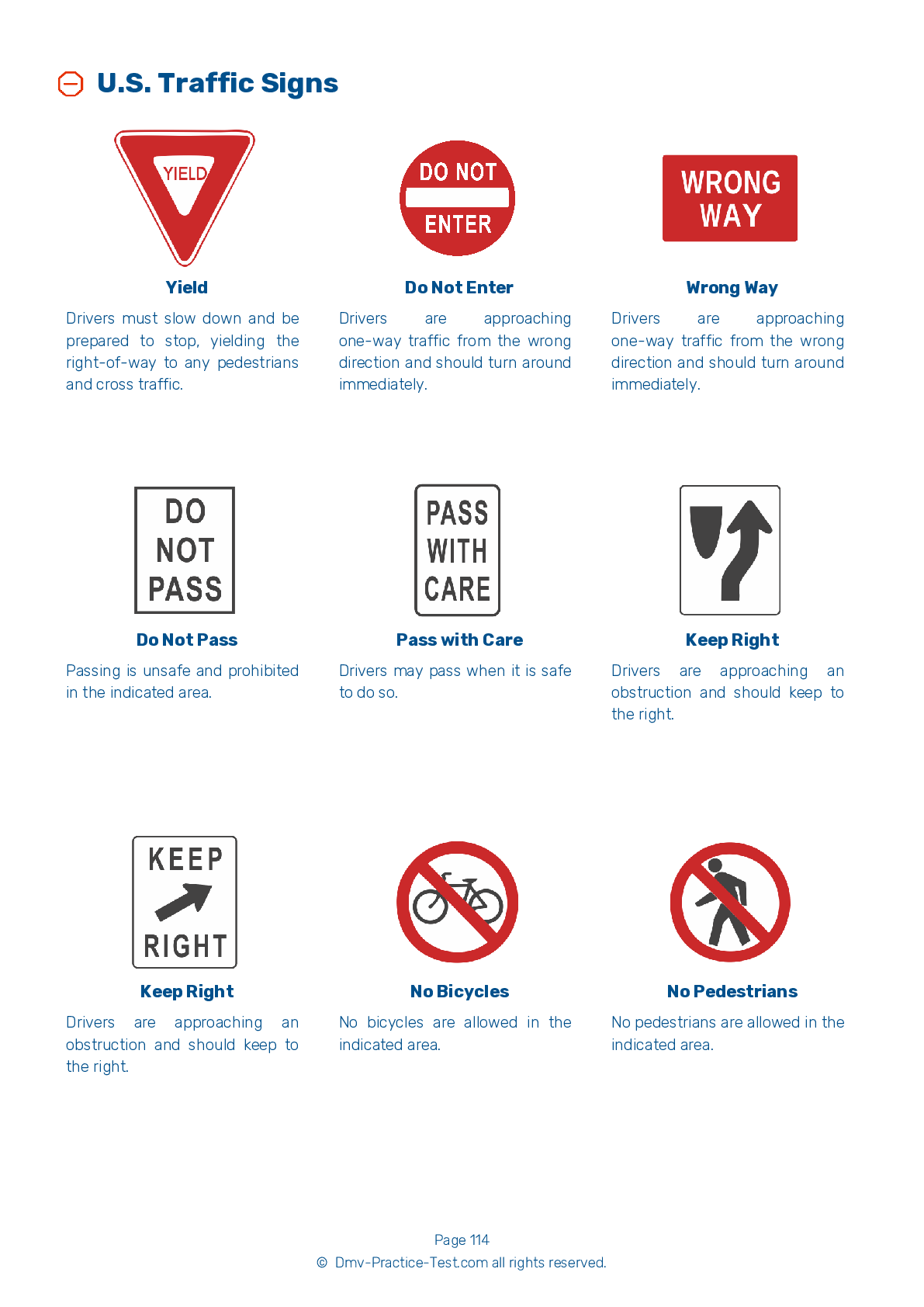HazMat #1
Hazmat Test | Utah 2025 #1 Page 5 of 5
On our website, we provide FREE practice - CDL hazmat test online! The official exam test consists of several obligatory parts, with all of them checking your knowledge of different blocks of road rules. If you need to obtain a UT CDL hazmat endorsement in 2025, practice as much as possible. Free sample tests published on our website will help you check and improve your knowledge and boost your grades. Please bear in mind that Utah requirements for issuing a hazmat endorsement for CDL may vary from those established in other states.
30
24
20
25 . When accepting a package of hazardous materials, a driver should ensure:
The all boxes are sealed.
When carrying hazardous materials, it is a good idea to compare the shipping papers to the markings and labels on the packages.
26 . When loading containers of hazardous materials, you should not use:
Other helpers.
When loading or unloading containers of hazardous materials, you should not use hooks, or any other tools that could damage containers or packaging.
27 . If cargo is leaking, you should:
Spray the leaking containers with water.
If you discover a leak in a cargo of hazardous materials, identify the materials in question by using the shipping papers, labels, or package location. Do not touch the leaking material.
28 . An explosive material is most likely categorized as a ____ hazard.
Class 7
Class 1 hazardous materials are typically items that present certain explosion or fire hazards.
29 . If you notice hazardous materials leaking while you are driving, you should:
Drive around looking for a person to repair the leak.
If a cargo leak develops while you are carrying hazardous materials, do not continue driving any farther than safety requires. The farther you drive, the larger the contaminated area will become. You should park the vehicle, secure the area, and stay with the vehicle while sending someone else to get help.
30 . What does a hazardous materials shipping paper describe?
The cost of the materials
A shipping paper describes the hazardous materials being transported. Shipping orders, bills of lading, and manifests are all shipping papers.
Search the best driving school in your neighbourhood
2025 Utah | Frequently Asked Questions
To acquire a CDL Hazmat endorsement in Utah, you must first have a valid Utah CDL. Then, pass the Hazardous Materials Endorsement Knowledge Test, submit to a federal background check and fingerprinting by the Transportation Security Administration (TSA). Finally, you must pay the required endorsement fee. It's recommended to study the Utah CDL Handbook beforehand.
To obtain a CDL Hazmat license, you must have a valid Commercial Driver's License (CDL). You should be at least 21 years old, have a clean driving record, and pass a physical examination. Additionally, you must pass the Hazardous Materials Endorsement Knowledge Test and a TSA background check. It's also important to be proficient in English for reading and speaking.
When applying for a CDL Hazmat endorsement in Utah, you'll need to provide your current CDL, proof of U.S. citizenship or legal presence (like a passport or birth certificate), social security card, and proof of Utah residency. You'll also need to complete the HAZMAT endorsement application and pass the TSA background check.
Yes, there is a dedicated written test for the CDL Hazmat endorsement. It's known as the Hazardous Materials Endorsement Knowledge Test. This test assesses your understanding of the rules and regulations related to transporting hazardous materials. It's recommended to study the relevant sections in your state's CDL handbook before taking the test.
The written test for the CDL Hazmat endorsement covers a variety of topics including: understanding and identifying different types of hazardous materials, rules for safe loading and unloading, proper use of placards and labels, emergency response procedures, and specific regulations regarding the transportation of hazardous materials. It's crucial to study these areas thoroughly.
Yes, there are extra charges associated with acquiring a CDL Hazmat endorsement. In Utah, the endorsement itself costs $9.00. However, you'll also need to pay for a TSA background check, which costs $86.50. Please note these fees are subject to change and it's always best to check the latest fee structure with the Utah Driver License Division.
Yes, a background check and security clearance are required for a CDL Hazmat endorsement. The Transportation Security Administration (TSA) conducts this check, which includes fingerprinting and a review of your criminal history. If you pass the background check, TSA provides a security threat assessment to your state's licensing agency.
Yes, obtaining a CDL Hazmat endorsement requires specialized training and passing a written test. The training covers handling hazardous materials, safety procedures, and emergency protocols. After the training, you must pass the Hazmat endorsement test to demonstrate your understanding of these areas. You also need to pass a TSA background check.
No, it's illegal to transport hazardous materials without a valid Commercial Driver's License (CDL) with a Hazmat endorsement. This endorsement ensures the driver is properly trained and knowledgeable about handling and transporting hazardous materials safely. Driving without the necessary endorsement can result in hefty fines and penalties.
Yes, you can add the CDL Hazmat endorsement to your current CDL license. You don't need to apply for a new CDL. However, you'll have to pass a written test specific to hazardous materials and undergo a TSA background check. Once these are successfully completed, the endorsement will be added to your existing CDL.




